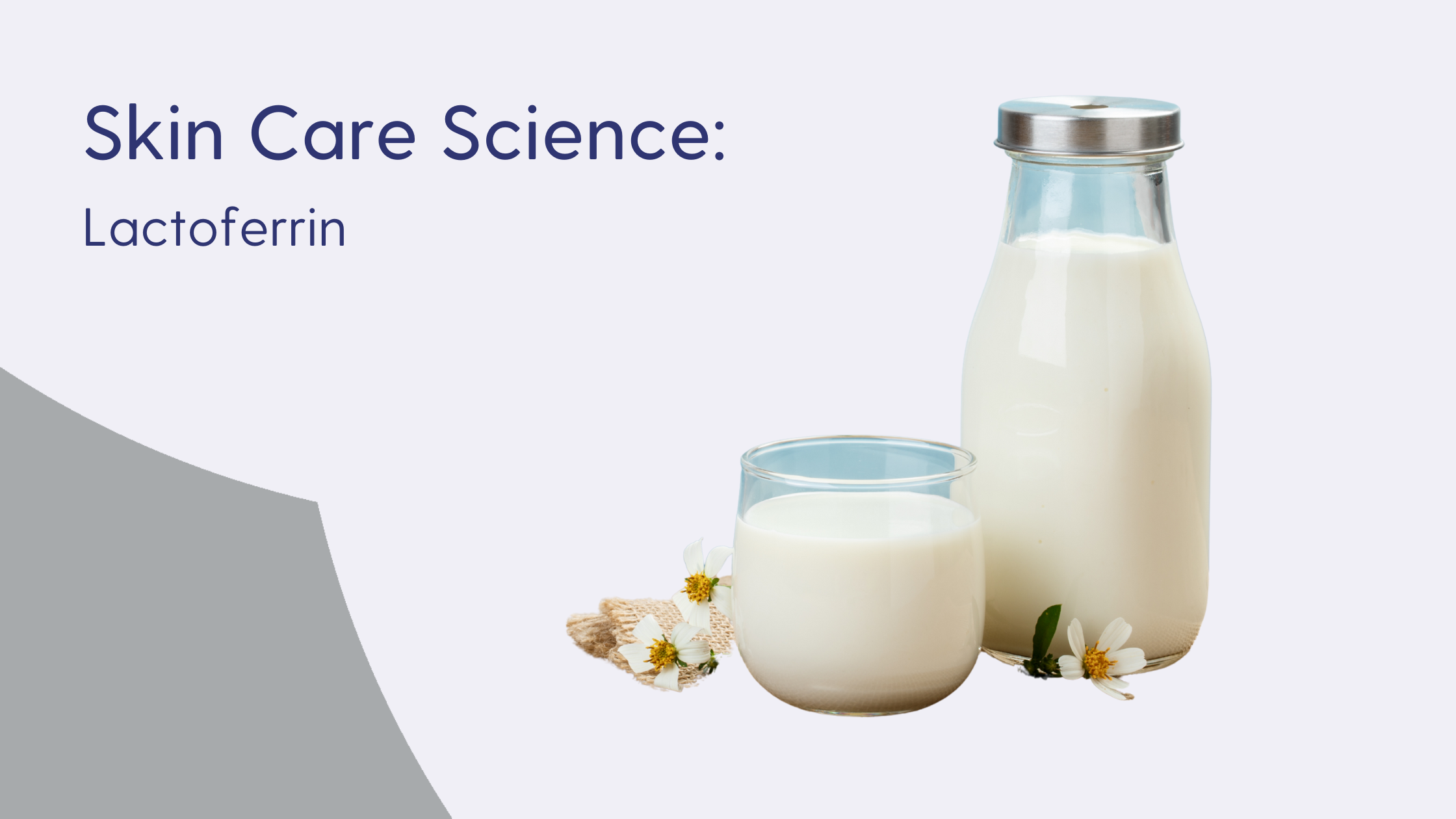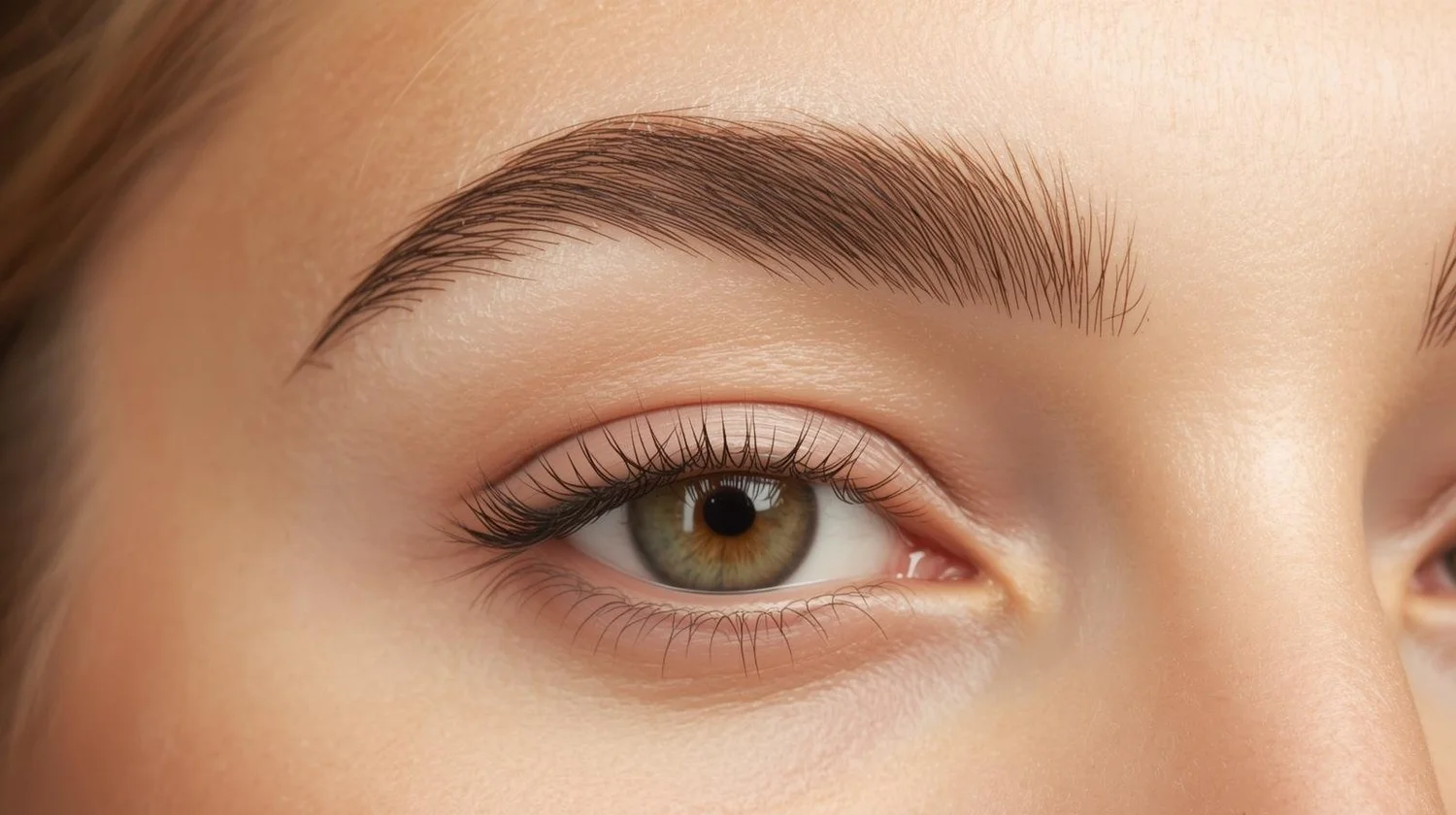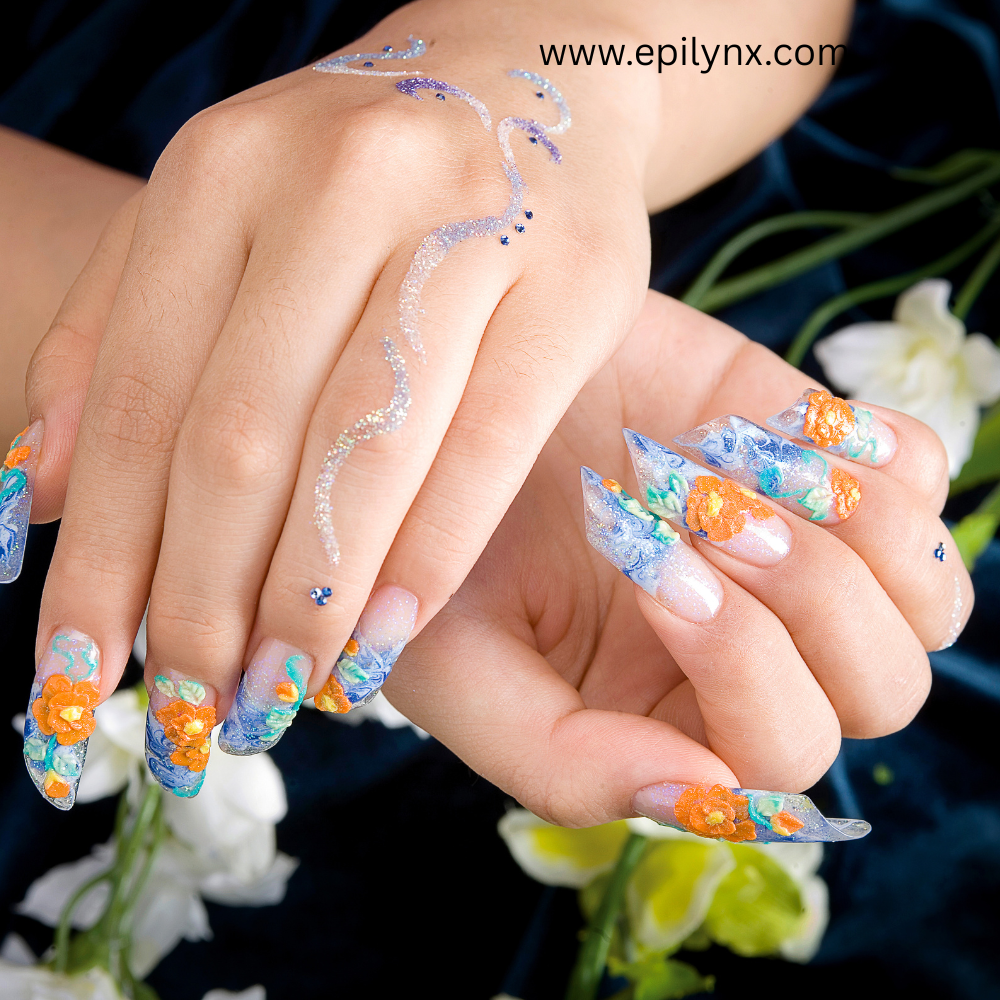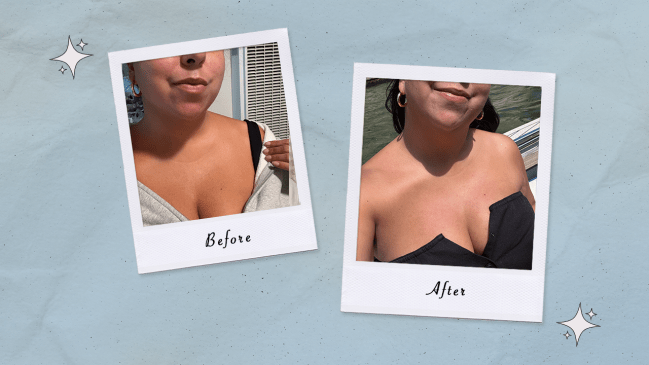🔄
Lactoferrin is a glycoprotein that your body makes naturally to perform several important functions. It is found in milk, saliva, and even tears. Most notably, lactoferrin binds to iron, which can otherwise help bacteria multiply, especially around wounds or inflamed areas. With strong anti-inflammatory properties, lactoferrin can also help calm redness, reduce swelling, and support the body’s healing process by communicating with the immune system.
In skin care, studies have shown that lactoferrin can be particularly beneficial as an anti-aging ingredient and post-procedure ingredient to reduce bruising and inflammation.
An iron-binding glycoprotein naturally found in the body.
Used in skin care to reduce bruising and slow skin aging.
Safe and well-tolerated by most skin types.

What Is Lactoferrin?
Lactoferrin is a glycoprotein, which is a protein with attached sugar molecules, that is part of the transferrin family. Its main function is to bind iron ions, which is crucial because excess iron in the body can feed pathogenic bacteria and contribute to oxidative stress. By tightly binding free iron, lactoferrin reduces both infection risk and inflammation.
This same property also makes lactoferrin a beneficial ingredient for reducing bruising , since iron released from broken blood vessels contributes to the formation of dark pigments like hemosiderin, which cause the purple and brown discoloration seen in bruises. By “locking away” this free iron before it can be converted into these pigments, lactoferrin helps to limit the intensity and duration of bruising, especially useful after injectable procedures like fillers or neuromodulators.
In skin care, lactoferrin is also used as an anti-inflammatory and anti-aging ingredient.

Bioactive Properties
Lactoferrin has several key mechanisms of action that make it so beneficial to bodily functions and when used in skin care:
-
Iron-binding sites. These are central to its antibacterial and antioxidant actions. By binding to iron, lactoferrin deprives bacteria of a resource they need to grow. This function also makes lactoferrin a good ingredient to use in post-procedure skin care to reduce bruising.
-
Antimicrobial peptides (lactoferricin). When lactoferrin is broken down by enzymes, it releases smaller peptides like lactoferricin that have strong antibacterial, antifungal, and antiviral activity (3,4).
-
Immunomodulatory properties. Lactoferrin interacts with immune cells like neutrophils and lymphocytes, helping to regulate inflammation and enhance wound healing.

Skin Benefits
Lactoferrin is often included in post-procedure and anti-aging products. Here is a closer look at some of its most notable benefits for the skin.
-
Anti-aging. Lactoferrin can significantly reduce chronic, low-grade inflammation, often referred to as “inflammaging.” Inflammation accelerates collagen breakdown and impairs the skin’s ability to repair itself. By calming pro-inflammatory cytokines and modulating immune responses, lactoferrin helps to slow this aging process (5). Lactoferrin is also a strong antioxidant, reducing oxidative stress and binding to free iron, which otherwise fuels the Fenton reaction – a chemical process that produces damaging free radicals in the skin (6).
-
Improves bruising. As noted above, lactoferrin reduces the appearance of bruises by binding to iron, which is responsible for visible bruising on the skin’s surface. Studies have shown that Alastin INhance, a topical product that contains lactoferrin, arnica, and other anti-inflammatory ingredients, can accelerate recovery and significantly reduce bruising and redness after dermal fillers (7).
-
Improves skin tone and discoloration. Lactoferrin helps to improve uneven skin tone by targeting the inflammation and oxidative stress that trigger excess melanin production. Inflammatory signals and reactive oxygen species stimulate melanocytes to produce more pigment, especially in conditions like melasma or post-inflammatory hyperpigmentation. Lactoferrin calms these pathways by reducing pro-inflammatory cytokines and binding iron, which limits free radical formation (8).
-
Improves acne. Lactoferrin’s antimicrobial and anti-inflammatory properties also make it useful for acne-prone skin. It can inhibit the growth of acne-causing bacteria and calm inflammation in existing breakouts (9).

Side Effects & Safety
Lactoferrin is generally considered very safe for topical use , with no known side effects. According to the Environmental Working Group (EWG), lactoferrin poses no known risk when applied to the skin. This ingredient is not currently listed in the Cosmetic Ingredient Review’s database.
When taken orally, lactoferrin is also typically well-tolerated, though very high doses may cause mild gastrointestinal discomfort. However, most cosmetic products contain much smaller doses of lactoferrin than those used in oral supplements.
Best Lactoferrin Products After Fillers
If you’ve recently had dermal filler injections or are planning to, look for a post-treatment serum like Alastin INhance Post-Injection Serum. It is formulated specifically to support skin healing and minimize bruising after injectables. This product combines lactoferrin with peptides, arnica, and antioxidants for fast-acting results.
Best Lactoferrin Products for Aging
You can find lactoferrin in several other Alastin skin care products designed for anti-aging and brightening the skin.
Bottom Line
Lactoferrin is a naturally-occurring protein that our body makes to perform many important functions. When used in skin care, this powerhouse ingredient can help bruises to clear more quickly, provide anti-aging and skin-brightening benefits, and aid in wound healing and treating acne.
Just be sure that the skin care products you are using are a match for your skin type.
Is lactoferrin good for eczema?
Yes. Due to its anti-inflammatory properties, it can help to calm irritated skin and reduce flare-ups in conditions like eczema.
Is lactoferrin antifungal?
There is some evidence suggesting antifungal activity, especially from its peptide derivative lactoferricin, but results are mixed and depend on the fungal strain.
What are the disadvantages of lactoferrin?
Topically, there are virtually no disadvantages. It’s safe, well-tolerated, and effective. Oral forms can occasionally cause digestive discomfort at high doses, but this is rare.
Best References and Scientific Publications
- Baumann L. Antiaging Ingredients in Ch. 37 of Baumann’s Cosmetic Dermatology Ed 3. (McGraw Hill 2022)
- Baumann, L. Ch. Cosmeceuticals and Cosmetic Ingredients (McGraw Hill 2015)
- Gifford, J. L., Hunter, H. N., & Vogel, H. J. (2005). Lactoferricin: Lactoferricin: A lactoferrin-derived peptide with antimicrobial, antiviral, antitumor and immunological properties. Cellular and molecular life sciences, 62, 2588-2598.
- Jones, E. M., Smart, A., Bloomberg, G., Burgess, L., & Millar, M. R. (1994). Lactoferricin, a new antimicrobial peptide. Journal of Applied Bacteriology, 77(2), 208-214.
- Widgerow, A. D., Ziegler, M. E., Garruto, J. A., & Bell, M. (2022). Effects of a topical anti-aging formulation on skin aging biomarkers. The Journal of Clinical and Aesthetic Dermatology, 15(8), E53.
- He, J., Yang, X., Men, B., & Wang, D. (2016). Interfacial mechanisms of heterogeneous Fenton reactions catalyzed by iron-based materials: A review. Journal of environmental sciences, 39, 97-109.
- Widgerow, A. D., Jacob, C., Palm, M. D., Garruto, J. A., & Bell, M. (2020). Developing a Topical Adjunct to Injectable Procedures. Journal of Drugs in Dermatology, 19(4), 398-404.
- Widgerow, A., Wang, J., Ziegler, M., Fabi, S., Garruto, J., Robinson, D., & Bell, M. (2022). Advances in Pigmentation Management: A Multipronged Approach. Journal of Drugs in Dermatology, 21(11), 1206-1220.
- Hassoun, L. A., & Sivamani, R. K. (2017). A systematic review of lactoferrin use in dermatology. Critical Reviews in Food Science and Nutrition, 57(17), 3632-3639.
Share
Comments










